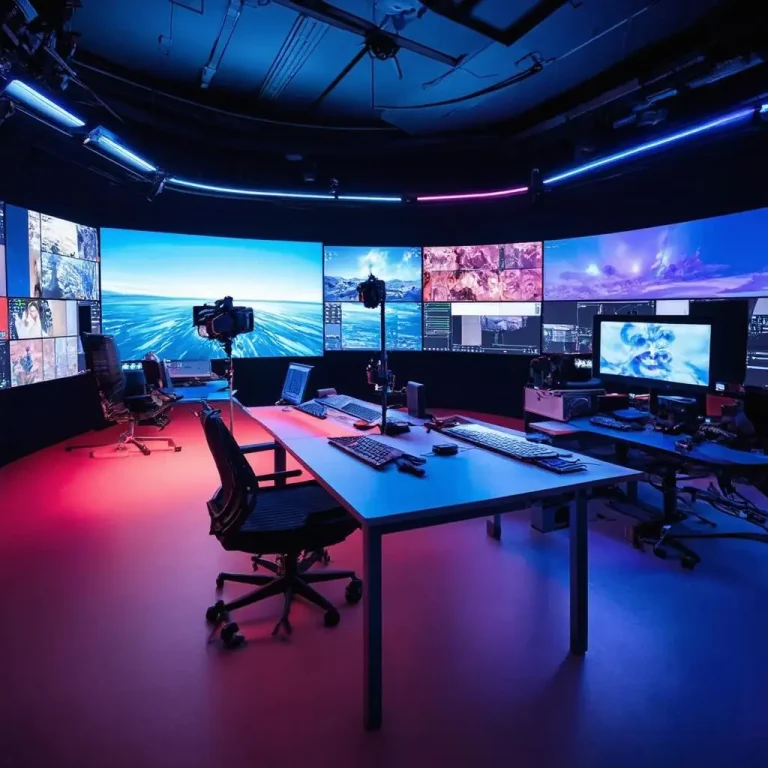In the ever-evolving world of broadcasting, maintaining viewer engagement is crucial. As viewers demand more immersive and high-quality content, broadcasters are turning to advanced technologies to revolutionize the viewing experience. High Dynamic Range (HDR) technology, among other innovations, has emerged as a pivotal tool in enhancing visual quality. This blog post explores HDR’s transformative impact and its implications for broadcasters, highlighting how they adopt these technologies to produce content that captivates audiences.
The Technical Brilliance of HDR
High Dynamic Range (HDR) technology brings a significant leap forward in video quality by expanding the range of color, brightness, and contrast available. Unlike standard dynamic range (SDR), HDR offers more vibrant and realistic images by allowing for a wider palette of colors and greater detail in both the brightest and darkest parts of a scene. The result is a more lifelike viewing experience, where colors pop, shadows have depth, and highlights shine without losing detail.
Technically, HDR achieves this by leveraging advanced algorithms and metadata that communicate the optimal display settings to compatible devices. This interaction ensures that each frame is rendered with precision, regardless of the viewing platform. For broadcasters, adopting HDR means investing in HDR-compatible cameras, workflows, and displays, ensuring every step of production captures and preserves the enhanced quality.
The Role of Other Innovative Tools
While HDR is a focal point, it is just one piece of the puzzle in the modern broadcast landscape. Other technologies such as Wide Color Gamut (WCG), 4K resolution, and Dolby Atmos are also reshaping the viewer experience. WCG complements HDR by providing a broader spectrum of colors, while 4K brings a higher level of detail with four times the resolution of conventional HD. Dolby Atmos adds a new dimension to audio, creating an immersive soundstage that envelops the viewer in three-dimensional sound.
The integration of these technologies requires a cohesive approach to content creation and delivery. Broadcasters must ensure seamless compatibility across devices and platforms, which involves sophisticated encoding and streamlining of production processes. This holistic adoption not only enhances video quality but also aligns with evolving consumer expectations.
Industry Implications and Adoption
The transition to HDR and other advanced technologies signifies a strategic move for broadcasters aiming to stay competitive. Early adopters gain an edge by setting new standards of quality that differentiate their content from traditional broadcasts. Moreover, embracing these technologies positions broadcasters to tap into new business opportunities, such as exclusive partnerships and premium content distribution.
For professionals in the broadcasting industry, this shift requires both technical and creative adaptations. From cinematographers learning to capture HDR-friendly footage, to editors mastering new post-production workflows, the entire production team must embrace continuous learning to elevate production quality. Industry collaboration is also paramount, as partnerships with technology providers can facilitate smoother transitions and ongoing improvements.
Conclusion
HDR and complementary technologies represent a revolution in how content is produced and consumed. By transforming the visual and auditory experience, these innovations enable broadcasters to deliver content that not only meets but exceeds viewer expectations. As the industry continues to evolve, those who embrace these advancements today will set the stage for tomorrow’s content standards, ensuring a richer, more engaging viewer experience. In adopting HDR and beyond, broadcasters are not just enhancing picture quality; they are crafting the future of entertainment.
- Revolutionizing Post-Production: The Role of AI and Machine Learning - October 20, 2024
- From Concept to Screen: The Crucial Role of Industry Events in Shaping Broadcast Futures - October 19, 2024
- Embracing Innovation: The Future of Broadcasting - October 18, 2024















